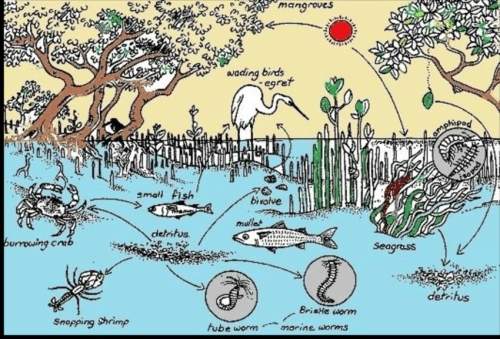Lab Report for Population Dynamics Lab
Population Dynamics Lab Report
Instructions: As you co...

Biology, 27.10.2020 22:50 darceline1574
Lab Report for Population Dynamics Lab
Population Dynamics Lab Report
Instructions: As you complete each slide of the Population Dynamics Virtual Lab Activity, please fill in this lab report with the appropriate information and data.
Title:
Objective(s):
Research:
List the variable descriptors for the lab here.
Hypotheses:
Materials:
The Population Dynamics Virtual Lab Activity
Population Dynamics Lab Report
Procedures:
The procedures are listed in Population Dynamics Virtual Lab Activity. You do not need to include them here.
Data and Observations
Table 1: Predation and Carrying Capacity
Starting Seal Population Starting Whale Population Highest Seal Population Highest Whale Population
Trial 1 25 25
Trial 2 25
Trial 3 25
Table 2: Growth Rate and Capture Efficiency
Seal Birth Rate Capture Efficiency Highest Seal Population Highest Whale Population
Trial 1 0.05 0.005
Trial 2 0.005
Table 3: Death Rate and Capture Efficiency
Whale Death Rate Capture Efficiency Highest Seal Population Highest Whale Population
Trial 1 0.05 0.005
Trial 2 0.005
Analysis and Conclusion:
Be sure to answer the following reflection questions as a summary paragraph in the conclusion of your lab report:
Were your hypotheses correct or incorrect? Why or why not?
Which factors affecting population growth and decline are modeled with the graphs?
Using Table 1, which of the three trials produced the highest population for both the whales and the seals? Why do you think this trial had the best outcome for the whale and seal populations?
Using Table 2 and 3, explain how the birth rates of the seals and the death rates of the whales affected the population for both whales and seals.
Questions:
Using what you have learned from the lesson and the virtual lab activity, answer the following questions in complete sentences:
Describe three additional biotic and abiotic factors not modeled in the simulation that could affect the population dynamic of the whales and seals.
Explain why some limiting factors may lead to drastic changes in whale and seal populations, while others may only cause minimal changes.
In this lesson, you learned about two patterns of population growth and decline, the sigmoid and peak phenomena. Does the seal and killer whale relationship represent a sigmoid or peak phenomenon? Please provide supporting details.
A microbe from an ecosystem that exists in the same arctic region has infected the whale population. The graph below shows the new carrying capacity for the whale population.
K is a steady horizontal line, slopes down, then levels off with N. N rises over time, sharply declines, rises again slightly, then levels off with K.
N represents population number, t represents time, and K represents carrying capacity.
Explain how these microbes have affected the whale population. Does this new evidence change the seal and killer whale relationship? Does this new relationship represent a sigmoid or peak phenomenon? Please provide supporting details.
If scientists added a chemical to destroy the arctic microbes, what positive and negative consequences could result? What population settings could you adjust in the simulation to test components of this solution?
Climate change in the form of global warming (an abiotic factor) has slowly decreased habitat for the arctic seals. What are the limitations of the population dynamics simulation in predicting the changes that may occur due to climate change?
Imagine that all nations agreed to reduce greenhouse gas emissions by half in an effort to reduce global warming. In what ways could you revise this simulation, so it accounted for the influence of this solution on arctic habitat, and on the whale and seal populations?

Answers: 3
Another question on Biology

Biology, 21.06.2019 15:00
What is the mrna strand that would be copied from this dna strand
Answers: 2

Biology, 21.06.2019 18:50
*will mark brainliest to the first and correct answer less species diversity results in less a. oxygen b. food c. drinkable water d. all of the above
Answers: 2

Biology, 21.06.2019 21:00
In natural selection, what is actually “selected? ” a) alleles are directly selected b) genotypes are directly selected c) phenotypes are directly selected d) entire populations are directly selected
Answers: 2

Biology, 22.06.2019 06:00
Which is one example of a phenotypic change that is not genetic
Answers: 3
You know the right answer?
Questions


Social Studies, 14.10.2019 21:50




English, 14.10.2019 21:50

Mathematics, 14.10.2019 21:50

Chemistry, 14.10.2019 21:50

Mathematics, 14.10.2019 21:50

Biology, 14.10.2019 21:50

Mathematics, 14.10.2019 21:50

Mathematics, 14.10.2019 21:50





Social Studies, 14.10.2019 21:50



History, 14.10.2019 21:50




